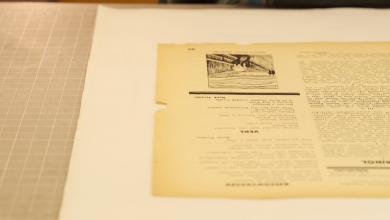The Pain Was Squeezing His Head Like an Octopus. What Was It?

The 66-year-oldman had just started his third lap at the community swimming pool outside Poughkeepsie, N.Y., when it struck. As he was turning his head to take a breath, an octopus of pain wrapped around the right side of his skull, starting at the joint where the jaw connects and slamming across his face and head with tentacles of squeezing agony. For a moment he was paralyzed — first with pain, then with fear. He couldn’t breathe; he could barely move. He struggled to the side of the pool and hung on, his breath ragged through involuntarily clenched teeth.
His wife hurried over. He was a good swimmer; what was wrong? She saw his lips move and leaned closer. His jaw was clenched. “I can’t speak,” he mumbled. She helped him out of the pool. “We’re going to go to urgent care,” she said as she handed him a towel.
These strange pains had been tormenting the man for nearly three weeks. It started as a headache that woke him from a dead sleep, a squeezing pressure deep inside his brain. He got up and took some acetaminophen. When he awoke the next morning, the headache was gone, but the regions around his head and face where the pressure had been strongest felt strangely tender. He couldn’t even brush his hair on the right side of his head. Bizarre as this was, he most likely would have soon forgotten about it except that it happened again the next night — and just about every night since.
The pain in his jaw started a couple of days later. Opening and closing his mouth, and especially chewing, made his jaw throb. Eating anything more solid than mashed potatoes triggered excruciating pain. He went to his dentist, who poked and prodded. The only tenderness was in the joint where the jaw attached to the skull. It’s most likely TMJ, the dentist concluded — temporomandibular joint pain. That joint and the many attached muscles make speech and facial expressions possible. Lots of people have pain there, the dentist added. Bad habits like jaw-clenching and tooth-grinding aggravate the joint. The treatment is behavior modification to unlearn these habits, and sometimes a bite block, a custom-made piece of acrylic worn at night to protect teeth from injury.
That didn’t sound right to the patient — or to his wife. She would know if he was grinding his teeth. She found a dentist online who specialized in jaw pain and TMJ. That dentist wasn’t sure what it was, either. Maybe it was some sleep issue, because the pain was worst at night. He referred the man for a sleep study. But that didn’t sound right, either.
Two of Everything
That weekend, the couple went to their club so the man could play in a tennis tournament. As he got out of the car, his world shifted, and he suddenly saw two of everything, one image on top of the other. “I can’t play tennis,” he told his wife calmly. “I’m seeing double.” The words terrified his wife. Did he have a brain tumor? All the worst possibilities suddenly seemed probable. Let me just walk around a bit to see if it gets better, the man said. It did get better, and he was able to play in the tournament.
The next week seemed endless as the man waited to start feeling better. Instead, the headaches continued to interrupt his nights. He lost nearly 10 pounds because it hurt too much to eat. And he had a second episode of double vision that really scared him. All of this made working nearly impossible.
So he was relieved when the next weekend came. It was his wife’s birthday on Sunday, and he had a lovely dinner planned. But when his afternoon swim turned nightmarish, the couple ended up instead in the emergency room of the MidHudson Regional Hospital in Poughkeepsie. As they waited to be seen, the wife got a text from Sarah Cope, the director of her art gallery. “How’s your day off?” Cope asked after some preliminary shoptalk. Awful, she texted back; she was in the E.R. with her husband. Sarah had heard all about the strange issues her boss’s husband was having, and now read through her friend’s description of the terrible scene at the pool.
The couple were soon taken into the bowels of the E.R. and given a tiny cubicle. That’s when Cope texted back: “Does his scalp hurt?” It did. “There is something called giant cell arteritis — an inflammation of the arteries in your brain. Same symptoms.” Neither the patient nor his wife had heard of this disorder. Cope shot back that she searched the internet for patients with similar symptoms and came across a story about a man who had been diagnosed with TMJ but actually had this much rarer disease.
Testing an Amateur’s Theory
The wife immediately searched the term on her phone. Giant cell arteritis (G.C.A.) is an autoimmune disease, and like most such diseases, it is rare. It causes inflammation and pain in the blood vessels of the face and brain. The couple scrolled through the description of the disease and the patients who have it. It’s seen in those over 50 and is most common in people of Northern European heritage. It’s much more common in women than men — but men do get it. And it seemed to account for every one of her husband’s symptoms: headache, double vision, jaw pain that worsens with use. Everything.
Dr. Danielle Belser, the emergency-medicine doctor on duty, entered the cubicle and introduced herself to the couple. The patient quickly went through his story, and after a short examination, the doctor stepped back. “I have a few ideas,” she said. She held her hand over the side of her face, with the first three fingers extended toward her mouth, her nose and her eyes. The fifth cranial nerve, she explained, also called the trigeminal nerve, comes out of the brain just in front of the ear and immediately divides into three branches that provide sensation to the skin of the face, the nose and the mouth. In trigeminal neuralgia, an injury to the nerve causes terrible pain in one of these branches.
Even as she was explaining her theory, she could see the couple shaking their heads. They were quite familiar with trigeminal neuralgia, the wife explained, because she had it just a couple of years before. It was awful and painful, but it wasn’t what her husband had. She was sure of that. “I know you’re going to hate this,” the wife added, “but we have a different idea about what it might be: giant cell arteritis.” The doctor smiled. “That was the very next thing on my list,” she said.
Belser ordered blood tests to look for signs of the significant inflammation this disease causes. If they were high, it could indicate the presence of G.C.A., but to really nail the diagnosis, the patient would need to get a biopsy of his temporal artery. In autoimmune disorders like this, the immune system mistakenly starts attacking parts of the body it’s designed to protect. In G.C.A., the targets are usually the blood vessels of the face, the eyes and the brain. Untreated, the disorder can cause blindness, strokes, even heart attacks. Because of that risk, when the diagnosis of G.C.A. is considered, treatment with high doses of steroids must be started immediately — even before the biopsy.
When the blood tests came back positive, the patient was given his first dose of prednisone. He would be on it for months, perhaps years. The headaches disappeared after the first couple of doses. And by the end of the week, he could eat again. The biopsy confirmed what he already knew: He had G.C.A. He has been on a high dose of prednisone since early this summer. His rheumatologist is slowly tapering the medicine, but no one can tell him how long he’ll need it. His face, he told me recently, is a little rounder than it used to be. Prednisone often causes what’s called a moon face. The rest of him is a little rounder as well — weight gain is another effect of the drug.
Sarah Cope is thrilled that she got the diagnosis right. She has always prided herself on her research skills, she says. “I’m 35. That means I know how to use a card catalog. But I can also use a computer to get the right answer.”
Lisa Sanders, M.D., is a contributing writer for the magazine. Her latest book is “Diagnosis: Solving the Most Baffling Medical Mysteries.” If you have a solved case to share, write her at [email protected].



